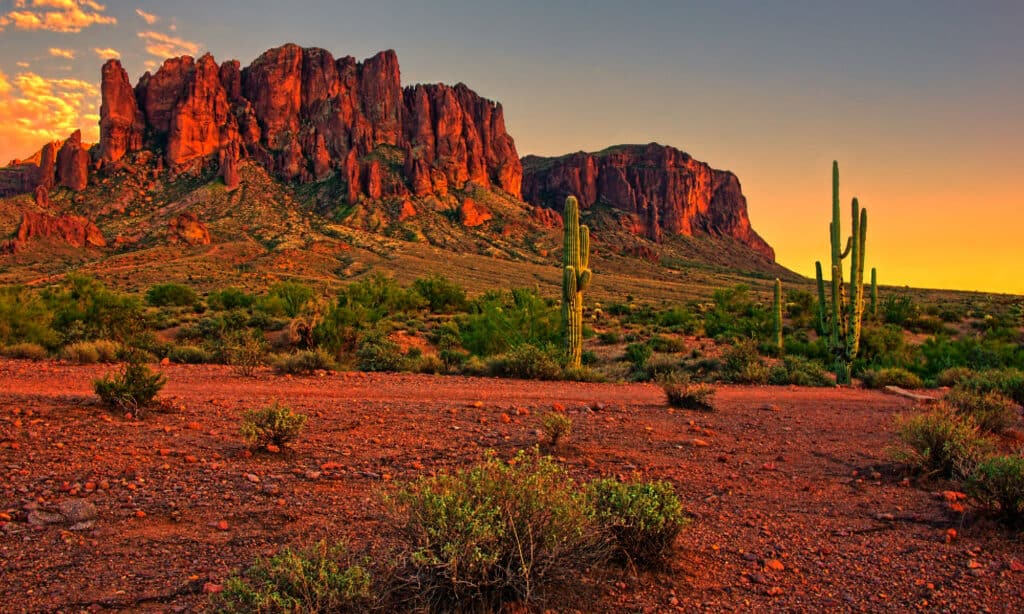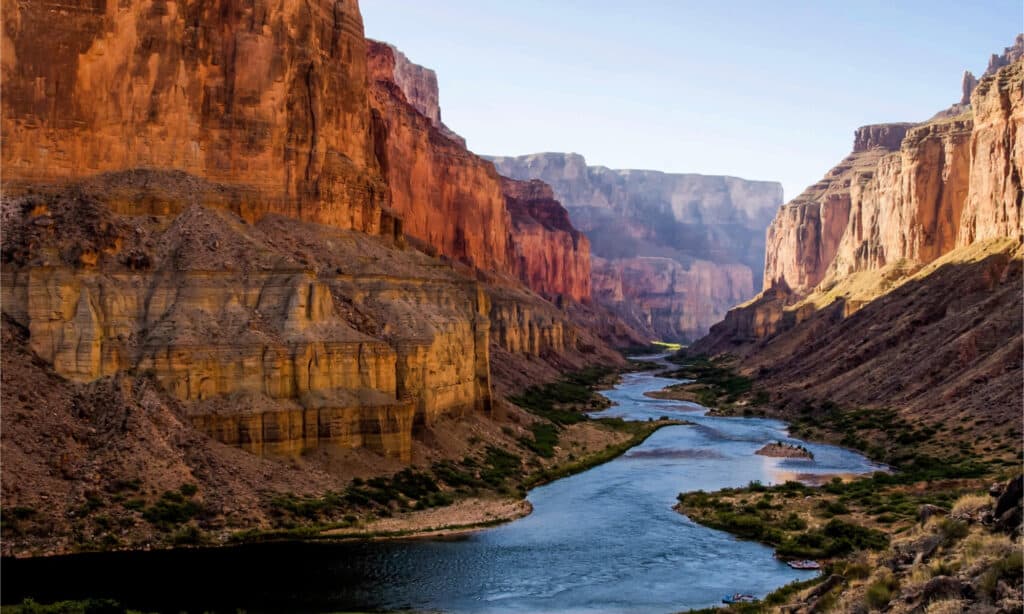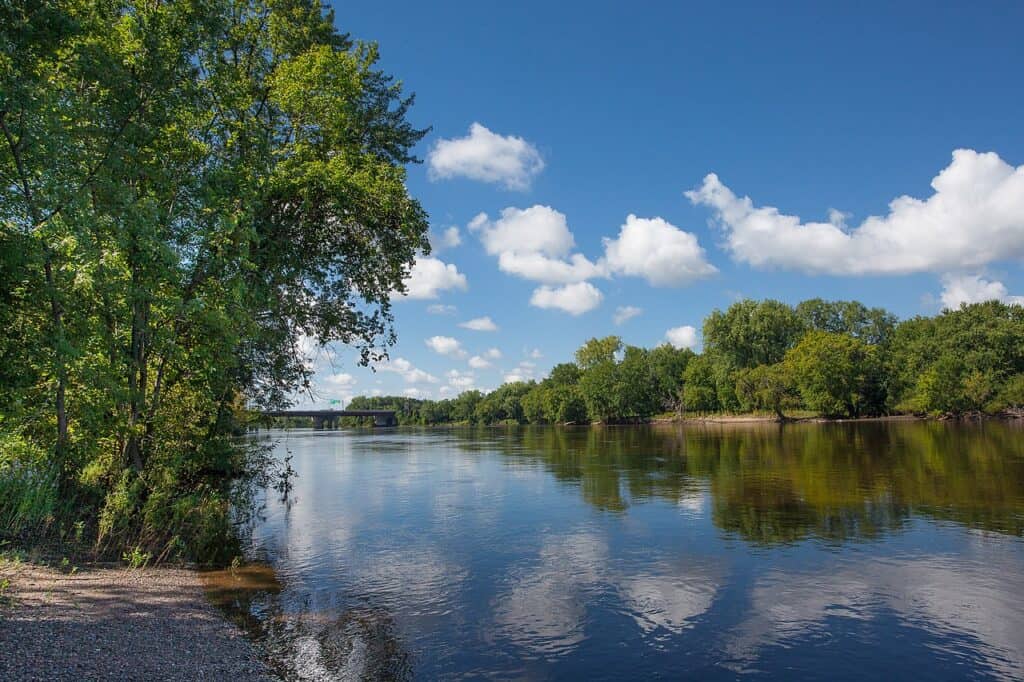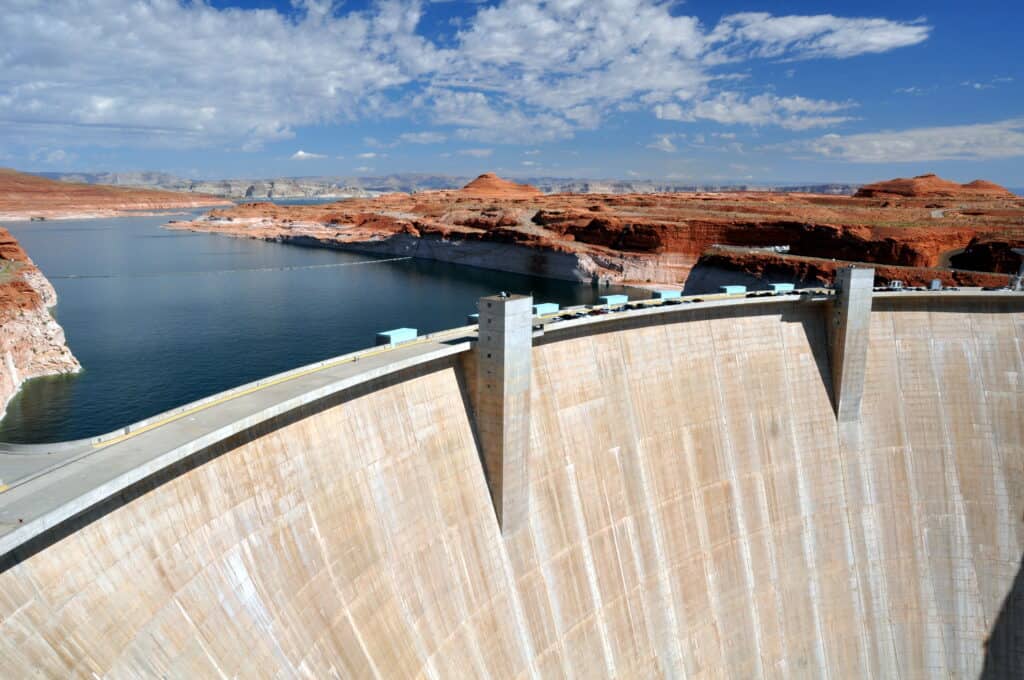Due to a 22-year-long drought and the effects of climate change, much of the southwest is experiencing a water shortage. The Colorado River Basin states, including Arizona, are trying to find solutions to the ongoing problem. The Colorado River which runs through Arizona provides water and hydropower for electricity to Arizona and the surrounding states. Two major lakes on the Colorado River are drying up. Lake Powell and Lake Mead both are at least partially in Arizona.
Recently, the Arizona Legislature proposed routing Mississippi waters west to help alleviate this situation. Let’s find out why Arizona wants to Divert Mississippi waters west.
Why is there a water shortage in Arizona?

Arizona is known for its hot, dry conditions.
©iStock.com/jenifoto
Much of Arizona is covered in desert and is known for its hot, dry weather. The past 22 years have been drier than normal, creating a drought situation. The effects of climate change have been creating warmer/drier conditions across the southwest.
Where does Arizona get most of its water?
Most of Arizona’s water comes from groundwater (40%), nearly as much from the Colorado River (36%), and another 20% from other surface water. Another 3% is from reclaimed water.
Where does the Colorado River flow?

The Colorado River flows 1,450 miles from Colorado down to the Gulf of California.
©Beth Ruggiero-York/Shutterstock.com
The Colorado River starts in Colorado, flows through Utah enters Arizona, and flows southwest through the Grand Canyon. It then meanders west to Nevada where it turns south. The river continues down the border of Nevada and Arizona, then the border of California and Arizona down to Yuma, AZ. Then it crosses over into Mexico and empties right before the Gulf of California.
Which lakes supply Arizona with water?
Many man-made lakes have been created in the southwest to help pool and supply water for the growing communities and agriculture. In Arizona, two major man-made lakes along the Colorado River ARE Lake Powell and Lake Mead. Lake Powell is located in north-central Arizona and in south-central Utah where the Colorado River passes into Arizona. It is created by the Glen Canyon Dam. Lake Mead is in the NW corner of Arizona where the Colorado River meets up with Nevada. This is where the water pools before going through the Hoover Dam. Both lakes have record low water levels.
Why does Arizona want to divert Mississippi waters west?

The Mississippi River flows from Minnesota down the center of the US to Louisiana and the Gulf of Mexico.
©NPS/Gordon Dietzman / Public Domain – License
Arizona wants to divert Mississippi waters west to pump water into the Colorado River system. This would increase the water supply to the southwest states and bring the water levels of Lake Powell and Lake Mead up. Increasing the water levels in the lakes is critical because not only do the lakes provide water, they provide hydropower for electricity for millions of people. For example, the Hoover Dam generates around 4,000 GWh of electricity in an average year. This energy is used by Arizona, Nevada, and California.
What did the Arizona legislature propose in 2021?
In an effort to alleviate the drought in Arizona, and the southwest, the Arizona legislature wanted Congress to do a feasibility study of diverting water from the Mississippi River west to the Colorado River. The idea was to create a pipeline system and diversion dam that would funnel floodwaters from the Mississippi into Arizona.
Is this the first time this has been proposed?
Diverting water from the Mississippi west to Arizona is not a new idea. It has been brought up before and, in fact, has been studied extensively. In 2012 the U.S. Bureau of Reclamation, the governing body of the Colorado River Basin, already did a feasibility study.
What did the U.S. Bureau of Reclamation find in a study from 2012?
They found that it would cost around $14 billion dollars (in 2012, which would be equivalent to around $18 billion today) to build a pipeline and dam system that would divert the water from the Mississippi. They also found that the project would take around 30 years. If they started this summer it wouldn’t be done until 2052.
What other issues are there with pumping water from the Mississippi to the Colorado River?
The feasibility study from the U.S. Bureau of Reclamation makes it clear that it is not cost-effective. A similar study done to bring water down from Alaska and Canada showed the return on investment would have been 5 cents for every dollar. It just doesn’t add up. Some of the issues from an engineering perspective were the peak flow required and the distance it would have to travel. In comparison to the California Aqueduct, the proposed Mississippi river pipeline would require two-and-a-half times more water and cover 4 times the distance. From an environmental standpoint, conservationists are concerned about piping in invasive species from the Mississippi.
What are some invasive species that live in the Mississippi River?

Snakeheads are a very destructive invasive animal and can be found in the Mississippi River.
©Narongchut/Shutterstock.com
- Black carp
- Bighead carp
- Grass carp
- Silver carp
- Northern snakehead
- Red shiner
- White catfish
What are other ways Arizona could solve the drought problem?
Many environmentalists are frustrated by resources being used to consider expensive “pipe dreams” like diverting water from the Mississippi. Easier solutions like cutting water usage in every sector are more sustainable and cost-effective. Water conservation programs in the past have worked!
How have water conservation programs worked in the past?
According to the Arizona Department of Water Resources (ADWR), the amount of water Arizona uses now (as of 2017) is less than it used in the 1950s. In 1957 it is reported that Arizona used 7.1 million acre-feet of fresh water and in 2017 that number was 7.0 million acre-feet. Think about how the population of Arizona has increased from 1 million in the 50s to nearly 7 million now. So there has been a success in managing the water usage in Arizona. Between the ’50s and now water usage fluctuated from a low of 6,300,000 acre-feet in 1992 to a high of 8,900,000 acre-feet in 1980. The past 10 years have been pretty consistent around 7,000,000 acre-feet. These past results indicate that maybe it is unnecessary for Arizona to scheme ways to divert the Mississippi waters west.

The Hoover Dam is an engineering marvel that generates hydroelectric power for millions of people.
©Matej Hudovernik/Shutterstock.com
Lake Powell and Lake Mead are Also in Danger
There is another problem plaguing officials of the Colorado River basin – the river’s biggest reservoirs, Lake Powell and Lake Mead are also drying up. Lake Mead, on the border of Arizona and Nevada, has dropped so low that there is fear that the turbines at Hoover Dam won’t have enough water to keep spinning and generating hydroelectric power for millions of people. If things continue as they are the infrastructure that delivers water to cities and farms in Nevada, Arizona and California is also at risk.
Up Next…
- Mississippi River Pollutants: What’s Ruining the Mississippi River?: Agricultural run-offs and more are making this river one of America’s most polluted.
- Is the Mississippi River America’s Most Endangered River?: Things don’t look good for the iconic river – which has dried up in some places because of drought.
- Here’s What a ‘Catastrophic Collapse’ of the Colorado River Looks Like: Rivers are important for so many reasons – including providing water, power, and transportation. Find out what a collapse of the Colorado river would mean and what could be done to prevent it.
The photo featured at the top of this post is © iStock.com/Sean Pavone
Thank you for reading! Have some feedback for us? Contact the AZ Animals editorial team.






